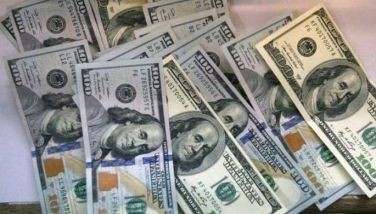The tale of the taper
Last May 22, Fed chairman Ben Bernanke fired a hawkish statement that was heard around the world. He said, “In the next few meetings, we could take a step down in our pace of purchases.†With this, Bernanke hinted about what possibly was the beginning of the end of the Fed’s unconventional monetary policy known as quantitative easing (QE). This statement triggered a vicious global correction that was felt not only in stocks, but also in bonds and currencies.
The end of the Bernanke put?
The phrase “Bernanke Put†is something that has been associated with aggressive monetary policy easing. A put is an option contract that binds parties to exchange an asset at a predetermined price at some point in the future.
By keeping interest rates low, monetary policy easing essentially drives investors out of less risky and low-yielding assets and forces them into riskier assets like stocks. The policymakers want to create a “wealth effect†through rising stock and home prices. The goal is to inspire business and consumer confidence that would lead to increased economic activity.
Since monetary policy easing drives stock prices higher, the Fed’s QE has practically placed a floor on stock prices. Investors view this as a free put or assurance from Bernanke, since they can buy stocks now and sell them at higher prices at some future date. This is why the Fed’s QE program has been referred to as the “Bernanke Put.â€
Global equity investors have been fortunate because global central banks followed Bernanke’s lead (The Great Global Monetary Easing, Oct. 22, 2012). Dubbed as the “Great Global Monetary Easingâ€, the concerted effort of global central banks gave rise to a global bull market in stocks (Global Bull Market, Jan. 7, 2013). Because QE triggered a different level of risk-taking, the hints of a possible policy reversal called for a serious strategy reevaluation for investors.
The tapering of money printing
What Bernanke hinted about last May 22 was the possible start of QE tapering. This refers to the gradual reduction in the Fed’s monthly bond purchases or liquidity injections into the economy. Bernanke said that the Fed might slow down on its bond purchases if it sees a sustained improvement in economic conditions. QE tapering will be necessary if the US economy shows a clear path to sustainable growth. However, if economic growth appears weak and inconsistent, the Fed may keep its loose monetary policy in place for a longer period of time.
Right now, it appears that the US economy is growing and has clearly recovered from the 2008 subprime mortgage crisis. However, various economic indicators give a mixed picture about the strength and sustainability of the US economy’s growth. Looking at the data, it seems that the US economy is in a “goldilocks†scenario – good but not too good.
Uncertainty triggers selldown
Since QE encouraged risk-taking and triggered a global bull market, the hints of a transition into less aggressive monetary easing called for an investment strategy reevaluation. Investors began asking questions as to what would drive markets higher if QE were to be tapered and eventually reversed.
If QE would indeed be tapered sooner than later, many are uncertain if economic growth would indeed be sustainable. Looking at the data, it seems that economic growth cannot stand on its own yet. Given the uncertainties surrounding QE and the global economy, some short-term speculators and nervous investors sold first and analyzed later.
The taper and the tape
The hints about QE tapering triggered large scale unwinding, deleveraging and repatriation. The unwinding of trades can be seen with how emerging market (EM) currencies sharply weakened vs. the US dollar since May 22, the day Bernanke hinted about QE tapering.
Because of EM currency weakness, foreign fund managers who typically look at portfolio returns in US dollar terms experienced painful drawdowns on their EM equity portfolios. This prompted them to unwind their EM equity positions, thereby triggering sharp corrections and chart breakdowns in most EM equity indices. This can be seen in the table below.

Sources: Bloomberg, Wealth Securities
Program eelling in EEM
The uncertainty about QE and the global economy, the weakness in EM currencies and the liquidity scare in China prompted short-term traders and hedge fund managers to aggressively reduce their EM equity exposures. They did this mainly by selling down their positions in the exchange-traded fund (ETF) called MSCI Emerging Markets (EEM). Since the Philippines is part of EEM, the ETF had to sell down a proportionate share of Philippine stocks when EEM was being sold down. Because of the small size and relative illiquidity of our market, we experienced a correction that was sharper than expected when EEM was sold down. This is one of the main reasons why our index reached a bottom of 5,678 in this correction (5-6-7-8, July 1, 2013).
Philippine fundamentals remain strong
In response to hints of QE tapering, EEM was sold down as a basket. In doing so, foreign investors aggressively sold down their EM positions without regard for each country’s fundamentals.
Note that our country’s fundamentals are intact and are actually getting stronger. In contrast, other countries which experienced similarly sharp corrections in their currencies and stock markets have been encountering economic and structural problems. The Philippines is not an export-dependent country like China and Korea. Moreover, our country is not a commodity exporter like Brazil and Australia. Also, we do not have the structural problems that plague countries like India and Indonesia.
Our economy draws its strength from robust domestic consumption. This is brought about by steady remittances and a growing BPO sector. Because of this, our economy is actually thriving in this “goldilocks†environment characterized by slow global growth and low inflation.
The markets finally get it
In past articles and in various presentations that we made, we alluded to the notion that Fed Chairman Ben Bernanke may be the most powerful man in the world. While it may not necessarily be true for politics, it seems to be the case as far as global stock markets are concerned. Fortunately or unfortunately, Bernanke’s words mean heaven or hell for the markets.
Last July 11, one sentence from Bernanke lifted stock markets all over the world. He said, “Highly accommodative monetary policy for the foreseeable future is what’s needed in the US economy.†Moreover, last July 17, Bernanke stated that the Fed’s bond purchases and the possible QE tapering are not on a preset course. He explained that the Fed’s actions will depend on data that show where the economy is going. Finally, Bernanke said that “Markets are beginning to understand our message and the volatility has obviously moderated.†These statements triggered strong rebounds in most global stock markets and drove the US markets to new all-time highs.
The PSE Index bounced strongly from the correction. Considering this and even Bernanke’s own words, our stock market’s extremely steep correction seemed like an exaggerated response to Bernanke’s hints about QE tapering. Moving forward, we expect our country’s fundamentals to shine as our economy thrives in this “goldilocks†scenario. With that said, we cannot discount the fact that volatility is back, as investors grapple with uncertainties about the Fed’s QE program and the global economy. Considering these, we recommend buying in dips or buying in tranches. Moreover, we advise investors to focus on companies that will continue to do well in this type of environment.
Philequity’s awards from PIFA
Last July 18, the Philippine Investment Funds Association (PIFA), the umbrella organization of local mutual funds, handed out a total of ten awards to Philequity. The event’s highlight was the awarding of the top equity funds. Philequity Fund was awarded 1st place in the 10-year return category as it delivered an average annual return of 22.7percent. Philequity PSE Index Fund took 3rd place in the 10-year return category with an average annual return of 19.6 percent. Congratulations to the investors of Philequity!
Please visit our online trading platform at www.wealthsec.com or call 634-5038 for detailed stock market research. You can also visit www.philequity.net to learn more about the Philequity Fund and view our archived articles. You can email us at [email protected] for feedback on the Philequity Corner articles.
- Latest
- Trending






























